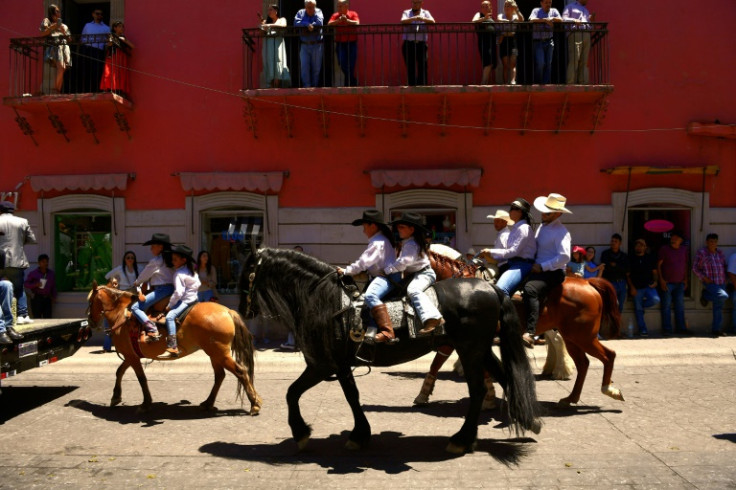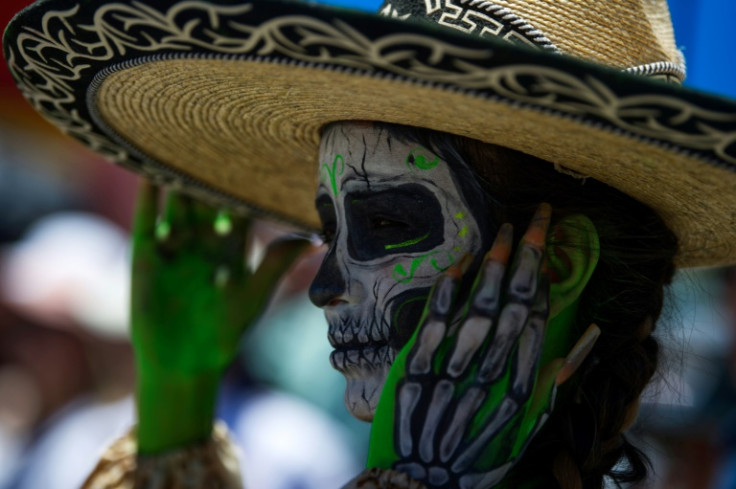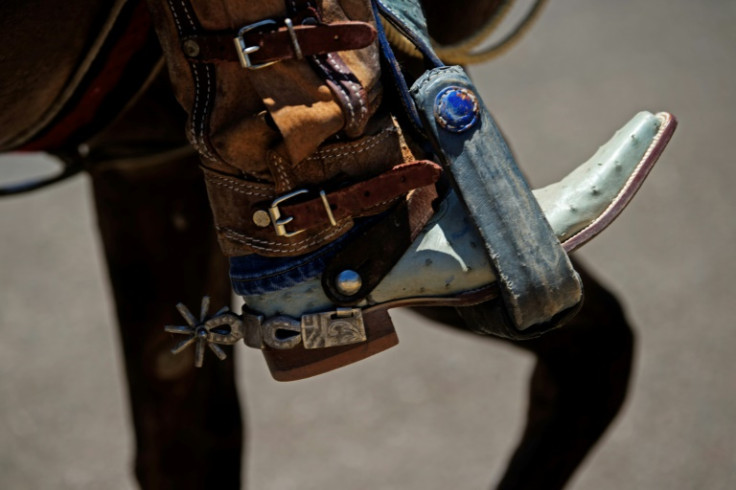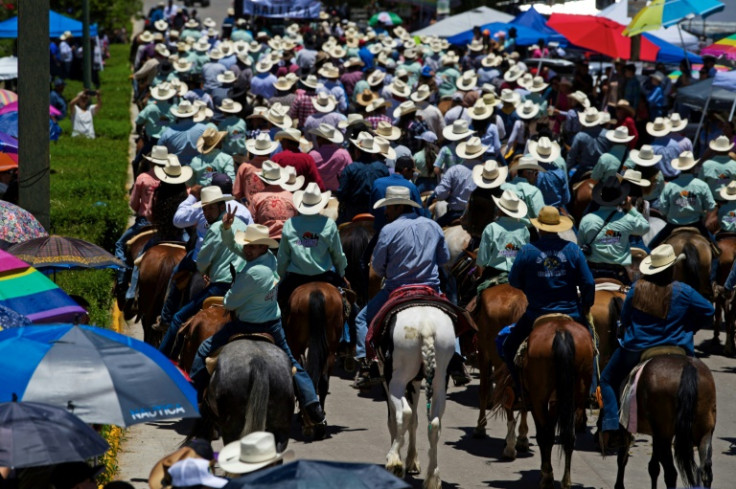Hero Or Villain? Mexicans Remember Revolutionary Pancho Villa

Thousands of Mexicans on horseback parade through the town where Francisco "Pancho" Villa, the outlaw turned revolutionary who inspired countless myths and legends, was killed 100 years ago.
Wearing leather boots in their stirrups and cowboy hats to shield from the blazing sun, riders filled the streets of Parral in the northern state of Chihuahua on Wednesday for commemorations marking the centenary one day later of his death.
Shouting "Viva Villa! Viva Mexico!" (Long live Villa! Long live Mexico!), the procession paused next to a statue of the mustachioed icon before filing through the town where bands played and crowds lined the streets.
It was the culmination of a journey in the saddle that for some participants began more than two weeks earlier -- and around 600 kilometers (370 miles) to the north -- near the Mexican-US border.
Others joined along the way as the procession crossed the vast plains of Chihuahua -- once a hotbed of the revolution -- to honor the man known as the "Centaur of the North."
"He was a hero. Others consider him a villain and others a murderer. But he wasn't like that," said Javier Baca, a 55-year-old resident of Parral who came dressed as Villa, with his trademark brimmed hat and bullet belts strung across his chest.
"I feel very proud to be present on this day," he told AFP.
Villa was one of the leading forces of the 1910 revolution, which began as an uprising against dictator Porfirio Diaz and led to the drafting of a new constitution.
"His contribution to the revolution is without doubt. Villa was the great military leader of the revolution in the second stage," Spanish-Mexican writer and historian Paco Ignacio Taibo II told AFP.
Villa generated among historians "a combination of admiration, repulsion, fascination, fear, love and hate" he wrote in his biography of the man who "married, or maintained close quasi-marital relationships, 27 times and had at least 26 children."
To his admirers, Villa was a Mexican version of Robin Hood who robbed the rich to give to the poor, before becoming a social-minded revolutionary and talented military general.
Other accounts portray Villa, the son of sharecroppers whose real name was Doroteo Arango, as a bandit, cattle rustler and cold-blooded murderer who fell in with revolutionaries despite having no real ideology.
"There are legends of Villa the Robin Hood, Villa the Napoleon of Mexico, Villa the ruthless killer, Villa the womanizer, and Villa as the only foreigner who has attacked the mainland of the United States since the war of 1812 and gotten away with it," the Austrian-born historian Friedrich Katz wrote in his book "The Life and Times of Pancho Villa."
"There is widespread agreement among friend and foe that Villa was capable both of great acts of generosity and of equally great acts of cruelty," he added.
Villa's life and death inspired a host of popular ballads as well as Mexican and Hollywood movies.
In the United States, Villa is perhaps best known for his brazen attack on Columbus, New Mexico in 1916, for motives that were the subject of much conjecture and debate.
In response, the US government sent troops under the command of General John J. Pershing on a fruitless mission to capture Villa, adding to his notoriety in Mexico.
"He's a hero here in Mexico, because no one else has managed to stop the gringos in war," said Ruben Palma, a 25-year-old engineer.
The revolutionary's luck eventually ran out on July 20, 1923 when at the age of 45 he was ambushed by gunmen while driving to a baptism -- an event that will be reenacted for the centenary.
According to Katz, there appears little doubt that the government of then-president Alvaro Obregon "was not only implicated in but probably organized the assassination of Villa" because it feared he might take part in another uprising.
Villa was buried in a graveyard in Parral. In 1976, his remains were exhumed and deposited in the Monument to the Revolution in Mexico City, leaving a mixed legacy in Parral.
"For some people he was a very good person and for others he was bad," said Gaby Armendariz, a 45-year-old housewife who came to watch the parade.
"What I hear is that he was a brave person who helped the poor," she added.




© Copyright AFP 2024. All rights reserved.





















